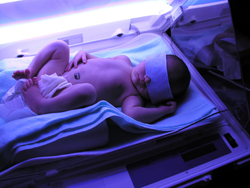SHARE WITH FRIENDS:
Non-compliance with the ABO system
ABO incompatibility is a complication that can occur during pregnancy. In fact, it is an immune reaction that occurs when babies have a different blood type to their mother and then under the influence of antibodies it produces. It is never under the control of the mother; blood groups are part of a person’s makeup. Babies incompatible with ABO should be closely monitored, but with effective treatment they respond very well and do not affect long-term health.
What's that?
Different blood groups are not compatible with each other and complications can occur when they mix. Because there are small molecules on the surface of blood cells, blood groups differ from each other. Each person has a unique combination of two of these surface molecules. Group O blood does not contain any surface molecules, but there are compounds of other blood groups.
When different blood groups mix, immunity is activated and antigens are formed. It is these antigens that cause problems for the baby.
Blood compatibility testing - Blood collection during pregnancy is very important. Similarly, adjusting and dialing blood before organ donation and blood transfusion, as well as before receiving blood products, reduces the likelihood of problems. When incompatible blood is given, a reaction similar to an allergic reaction begins.
The main blood groups in which ABO incompatibility occurs:
-
In children with blood groups A, B or AB
-
With mothers with group O blood
Babies inherit a blood type from their parents, but this means that the baby will always have the same blood type as its mother; fathers play an equally important role. If the baby has O blood type or his mother belongs to the same blood group, it will not be a problem at all.
But I thought the blood of the mother and the baby was kept separate!
Mothers with group O blood develop antibodies to fight blood groups A and B, but they are large and cannot pass through the placenta. Usually during pregnancy, the blood of the mother and her baby does not mix. They are separated by the placental membrane, through which there is no wall, no oxygen and no nutrients, no blood.
However, during pregnancy, it is common for several of the baby’s blood cells to pass into the mother’s bloodstream. This can happen if there is a miscarriage, during childbirth, or if the mother has any trauma.
When this happens, smaller antibodies called Anti-A or Anti-B can return to the baby’s bloodstream. As a result, these antibodies attack the baby’s red blood cells. Infants affected in this way are prone to jaundice soon after birth. This condition is called hemolytic disease of the newborn.
If the baby’s red blood cell count is too low, they may need a blood transfusion to get their iron levels back to normal. Blood transfusions may be required from the exchange. The child's blood should be carefully measured and immediately replaced with the same amount of donor blood.
Depending on the degree of anemia and / or jaundice, the child may need to be seen in the maternity / hospital special care unit. Feeding, hydration, iron counting, and monitoring and control of jaundice are best done where there are specialized personnel.
Treatment options
Babies with hemolytic disease turn yellow very quickly after birth. This can result in yellowing of the skin and often the whites of their eyes are clearly visible. Jaundice occurs as a result of the presence of too much bilirubin in the bloodstream. Children who have turned yellow may look olive-colored in their hair, even though they are genetically Caucasian.
How is bilirubin measured?
A blood test is usually collected by stabbing the baby’s heel. It is then tested in a laboratory to measure the amount of bilirubin in the baby’s blood. If it exceeds the safe floor, then phototherapy treatment begins. Phototherapy lamps provide light waves, so bilirubin changes when they are absorbed into the skin. It can then be excreted with urine and bowel movements.
How does a child get rid of excess bilirubin?
In infants treated with phototherapy, the stools are often green in color and loose in density. This is normal and a sign that their body is releasing excess bilirubin. A common alternative to using phototherapy lamps is to use ‘bili’ blankets, which use fibreoptic technology to deliver a safe but highly effective light directly to the baby’s skin. Bili blankets can be used for 24 hours every day until the bilirubin level drops and the mother’s antibodies clear the baby’s blood. This usually happens a few days after birth.
Children who are yellow can be very sleepy. They sometimes need to wake up for feedings and require effective feeding, especially if they are breastfed. Children who have received phototherapy treatment may still be offered hugs and breastfeeding. If the bilirubin level is too high, the duration of treatment with phototherapy may be limited.
huggies.uz
